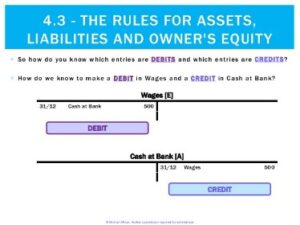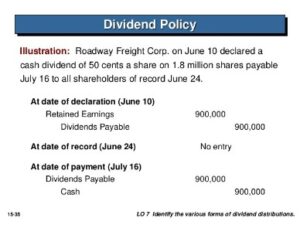What Is a Bank Reconciliation Statement, and How Is It Done?

Outstanding checks are those that have been written and recorded in the financial records of the business but have not yet cleared the bank account. This often happens when the checks are written achieve an outcome definition and meaning in the last few days of the month. In order for reconciliation in account to be most effective in preventing errors and fraud, it’s important to conduct the process frequently. And, for some types of accounts, like trust accounts, there may be specific frequency requirements that you must follow to stay compliant with your state bar. Some businesses with a high volume or those that work in industries where the risk of fraud is high may reconcile their bank statements more often (sometimes even daily).
Add bank-only transactions to your book balance
Similarly, add any interest payments or bank fees to your business’s cash accounts to find your adjusted cash balance. You should complete a bank reconciliation at regular intervals for all bank accounts, to ensure what is cost principle definition and examples that your cash records are correct. Otherwise, you may find that cash balances are much lower than expected, resulting in bounced checks or overdraft fees. A bank reconciliation will also detect some types of fraud after the fact; this information can be used to design better controls over the receipt and payment of cash. Taking the time to perform a bank reconciliation can help you manage your finances and keep accurate records.
In the following post, we’ll cover the crucial types of reconciliation for legal professionals and delve into the fundamentals of three-way reconciliation accounting. Plus, we’ll offer useful best practices for reconciliation in accounting for lawyers to help make the process easier, more effective, and more efficient. The analytics review approach can also reveal fraudulent activity or balance sheet errors. In this case, businesses estimate the amount that should be in the accounts based on previous account activity levels. The deposit could have been received after the cutoff date for the monthly statement release. Depending on how you choose to receive notifications from your bank, you may receive email or text alerts for successful deposits into your account.
You can also opt to use a simple notebook or spreadsheet for recording your transactions. Consider performing this monthly task shortly after your bank statement arrives so you can manage any errors or improper transactions as quickly as possible. Conducting regular bank reconciliation helps you catch any fraud risks or financial errors before they become a larger problem.

Step 2: Reconcile internal trust accounts and client ledgers
- For example, real estate investment company ABC purchases approximately five buildings per fiscal year based on previous activity levels.
- Bank charges are service charges and fees deducted for the bank’s processing of the business’s checking account activity.
- Clio’s legal trust management software, for example, allows you to manage your firm’s trust accounting, reconcile directly in Clio, and run built-in legal trust account reports.
- Reconciling your bank statements allows you to identify problems before they get out of hand.
- Reconciliation in accounting is needed whenever there are financial transactions to ensure accuracy and consistency in the records.
After including all the amounts identified in Step 3, your statements should display the same final balance. If any discrepancies cannot be identified and reconciled, it may signal an error or risk of fraud which your company can investigate further. For example, real estate investment company ABC purchases approximately five buildings per fiscal year based on previous activity levels. This year, the estimated amount of the expected account balance is off by a significant amount. Make a note of any discrepancies between your bank statement balance, cash balance, and transaction history. The reconciliation statement allows the accountant to catch these errors each month.
Compare the Deposits
You can also perform bank reconciliation by hand, meaning you’d manually compare your bank statement to your general ledger transaction by transaction. Or, if you use accounting software to track your business’s finances and generate financial statements, the software should have a built-in method to speed up bank reconciliation. Hopefully, once you’ve dealt with deposits in transit, outstanding checks, interest payments, and bank fees, your bank statement and internal accounting records will match.
Deposits in transit are amounts that are received and recorded by the business but are not yet recorded by the bank. And, because Clio integrates with best-in-class accounting tools like QuickBooks and Xero, you can use them together to further simplify reconciliations. When using Clio together with these integrated accounting solutions, trust account updates made in Clio are then automatically updated in QuickBooks or Xero. It’s also important to ensure you maintain detailed records of the three-way reconciliation accounting process. Because the individual is fastidious about keeping receipts, they call the credit card to dispute the amounts. After an investigation, the credit card is found to have been compromised by a criminal who was able to obtain the company’s what is net income and how to calculate it information and charge the individual’s credit card.
Take note that you may need to keep an eye out for transactions that may not match immediately between the sets of records for which you may need to make adjustments due to timing differences. For example, a transaction that may not yet have cleared the trust bank account could be recorded in the client ledger, but may not yet be visible on the trust account bank statement. Reconciliation in accounting—the process of comparing sets of records to check that they’re correct and in agreement—is essential for ensuring the accuracy of financial records for all kinds of businesses. For the legal profession, however, regular, effective reconciliation in accounting is key to maintaining both financial accuracy and legal compliance—especially when managing trust accounts. In general, reconciling bank statements can help you identify any unusual transactions that might be caused by fraud or accounting errors. Add the amount of deposits in transit and subtract the amount of any outstanding checks from your bank statement’s cash balance to arrive at (and record) an adjusted bank balance.

Join The Discussion